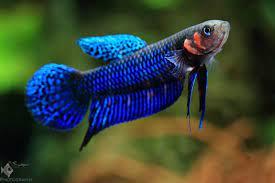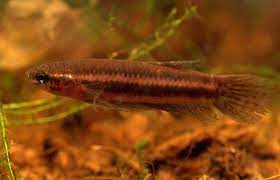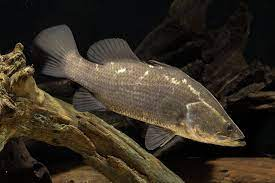xenacanth9's Fish of the Day
- Thread starter xenacanth9
- Start date
You are using an out of date browser. It may not display this or other websites correctly.
You should upgrade or use an alternative browser.
You should upgrade or use an alternative browser.
- Status
- Not open for further replies.
DAY 133
https://bwaquatics.com/collections/coccina-complex/products/wild-betta-hendra?variant=35242030006424


Hendra Betta
Betta hendra
Size: 2”
pH: 4.0-6.5
Tank size: 5G/Individual
Country of origin: Indonesian Borneo
Diet: Most dry, frozen, and live foods small enough will work
Temperament: Aggressive, though could possibly be kept in a community tank under the right circumstances
Temperature: 75-80° F
Description
Betta hendra is yet another rare Betta found only in Indonesia. They are one of the smaller Betta species, and they are only known from the Sabangau peat swamp forest, which, interestingly, is home to what is believed to be the largest wild orangutan population in the world. Clear sexual dimorphism, as shown above. (Left: male, right: female) Part of the coccina complex.
https://bwaquatics.com/collections/coccina-complex/products/wild-betta-hendra?variant=35242030006424
Hendra Betta
Betta hendra
Size: 2”
pH: 4.0-6.5
Tank size: 5G/Individual
Country of origin: Indonesian Borneo
Diet: Most dry, frozen, and live foods small enough will work
Temperament: Aggressive, though could possibly be kept in a community tank under the right circumstances
Temperature: 75-80° F
Description
Betta hendra is yet another rare Betta found only in Indonesia. They are one of the smaller Betta species, and they are only known from the Sabangau peat swamp forest, which, interestingly, is home to what is believed to be the largest wild orangutan population in the world. Clear sexual dimorphism, as shown above. (Left: male, right: female) Part of the coccina complex.
this closely resembles the "alien" green and blues that were prevalent a few years agoDAY 133
https://bwaquatics.com/collections/coccina-complex/products/wild-betta-hendra?variant=35242030006424


Hendra Betta
Betta hendra
Size: 2”
pH: 4.0-6.5
Tank size: 5G/Individual
Country of origin: Indonesian Borneo
Diet: Most dry, frozen, and live foods small enough will work
Temperament: Aggressive, though could possibly be kept in a community tank under the right circumstances
Temperature: 75-80° F
Description
Betta hendra is yet another rare Betta found only in Indonesia. They are one of the smaller Betta species, and they are only known from the Sabangau peat swamp forest, which, interestingly, is home to what is believed to be the largest wild orangutan population in the world. Clear sexual dimorphism, as shown above. (Left: male, right: female) Part of the coccina complex.
DAY 134
https://exoticfishshop.net/product/barramundi-6/

Barramundi
Lates calcarifer
Size: 4’ [Sometimes larger, though this takes a very long time and very good care]
pH: 7.0-8.5
Tank size: 2000G/Individual
Country of origin: India, Thailand, China, Japan, then down through Indonesia and Australia
Diet: Most live, frozen, and prepared foods of an appropriate size will suffice
Temperament: Aggressive, may tolerate similarly-sized fish
Temperature: 65-80° F
sg: 1.000-1.025
Description
Lates calcarifer is a very important commercial food fish in much of its native range, especially Australia. These fish are notorious in these regions for their large size, extreme power, and robust personalities. As pets, these fish are rather hardy, and are rather peaceful among other gargantuan predators, such as the alligator gar. This is certainly no fish to be reckoned with, and along with the aforementioned Murray cod, it is one of Australia’s most renowned freshwater predators.
https://exoticfishshop.net/product/barramundi-6/

Barramundi
Lates calcarifer
Size: 4’ [Sometimes larger, though this takes a very long time and very good care]
pH: 7.0-8.5
Tank size: 2000G/Individual
Country of origin: India, Thailand, China, Japan, then down through Indonesia and Australia
Diet: Most live, frozen, and prepared foods of an appropriate size will suffice
Temperament: Aggressive, may tolerate similarly-sized fish
Temperature: 65-80° F
sg: 1.000-1.025
Description
Lates calcarifer is a very important commercial food fish in much of its native range, especially Australia. These fish are notorious in these regions for their large size, extreme power, and robust personalities. As pets, these fish are rather hardy, and are rather peaceful among other gargantuan predators, such as the alligator gar. This is certainly no fish to be reckoned with, and along with the aforementioned Murray cod, it is one of Australia’s most renowned freshwater predators.
Yeah! Barras are one of the best “wet pets” you can get. Also a great eating fish. Most people house them in ponds cause they get huge quickly. But as i have stated previously mouth almighty are just small barra!DAY 134
https://exoticfishshop.net/product/barramundi-6/
View attachment 1490461
Barramundi
Lates calcarifer
Size: 4’ [Sometimes larger, though this takes a very long time and very good care]
pH: 7.0-8.5
Tank size: 2000G/Individual
Country of origin: India, Thailand, China, Japan, then down through Indonesia and Australia
Diet: Most live, frozen, and prepared foods of an appropriate size will suffice
Temperament: Aggressive, may tolerate similarly-sized fish
Temperature: 65-80° F
sg: 1.000-1.025
Description
Lates calcarifer is a very important commercial food fish in much of its native range, especially Australia. These fish are notorious in these regions for their large size, extreme power, and robust personalities. As pets, these fish are rather hardy, and are rather peaceful among other gargantuan predators, such as the alligator gar. This is certainly no fish to be reckoned with, and along with the aforementioned Murray cod, it is one of Australia’s most renowned freshwater predators.
Here’s a fun fact; Barramundi (lates calcarifer) were not always called barramundi. Barramundi are the Aboriginal name for the Southern Saratoga, but fish marketers wanted ‘giant asian sea perch’ to sound more exotic and rare so they took the name Barramundi. This is also why in old books you will se Saratogas called Spotted barramundi.
Last edited:
I was aware that saratogas are sometimes called barramundi, but I didn't know the full story! Very interesting
DAY 135
https://www.sandcitycichlids.com/products/neolamprologus-meeli

Meeli Shell Dweller
Lepidiolamprologus meeli
Size: 3.5”
pH: 7.5-8.5
Tank size: 20G/1 small group
Country of origin: Burundi, DR Congo, Tanzania, Zambia
Diet: Most live, frozen, and prepared foods of an appropriate size will suffice
Temperament: Highly territorial, should be kept in a species tank
Temperature: 75-80° F
Description
The smallest cichlids in the world include Africa’s shell dwellers, and among the largest of that group is Lepidiolamprologus meeli, or as I used to know it, Neolamprologus meeli. While some smaller shell dwellers only require about ten gallons, this species requires a larger tank due to its size. I have a special connection to this fish, as, after doing some research, I have concluded that this is the first cichlid I have ever owned. In my experience, they are rather hardy. These fish, as one could conclude from their name, often establish territories inside of discarded invertebrate shells.
https://www.sandcitycichlids.com/products/neolamprologus-meeli
Meeli Shell Dweller
Lepidiolamprologus meeli
Size: 3.5”
pH: 7.5-8.5
Tank size: 20G/1 small group
Country of origin: Burundi, DR Congo, Tanzania, Zambia
Diet: Most live, frozen, and prepared foods of an appropriate size will suffice
Temperament: Highly territorial, should be kept in a species tank
Temperature: 75-80° F
Description
The smallest cichlids in the world include Africa’s shell dwellers, and among the largest of that group is Lepidiolamprologus meeli, or as I used to know it, Neolamprologus meeli. While some smaller shell dwellers only require about ten gallons, this species requires a larger tank due to its size. I have a special connection to this fish, as, after doing some research, I have concluded that this is the first cichlid I have ever owned. In my experience, they are rather hardy. These fish, as one could conclude from their name, often establish territories inside of discarded invertebrate shells.
Next one is one that I've been looking forward to for a while
- Status
- Not open for further replies.


